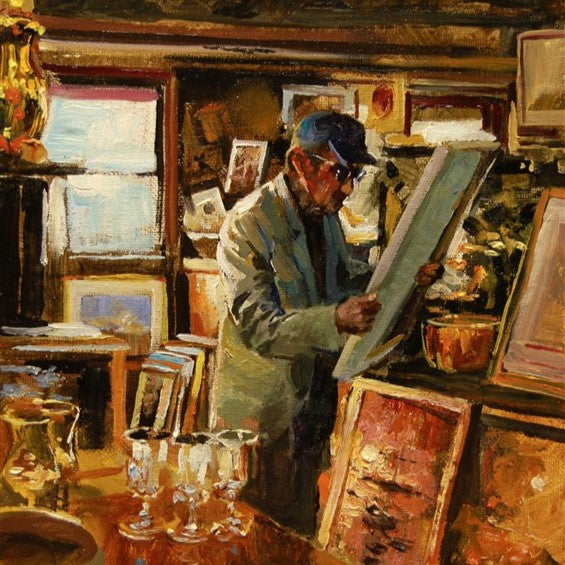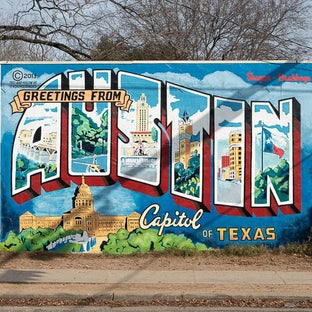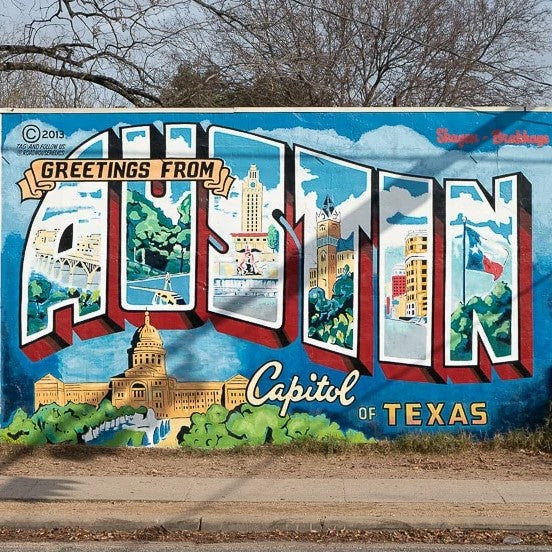Five Tips for Your Best Art Fair Exploration Experience
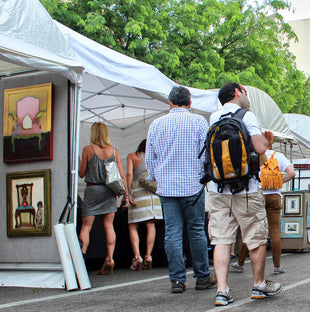
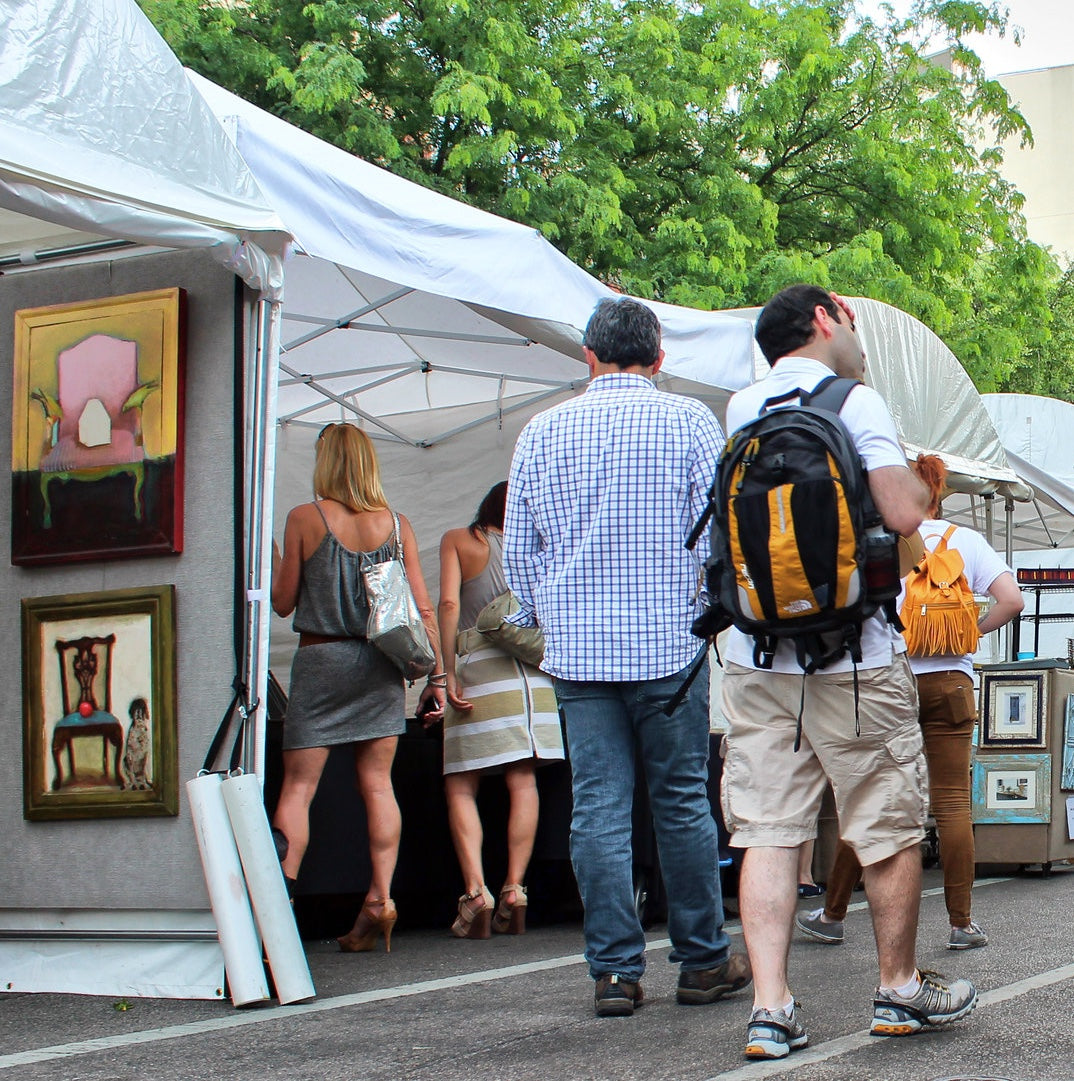

One of my favorite happy accidents is when I'm visiting a city, whether for work or pleasure, and I stumble upon a great local event that I didn't know about when I booked my trip. I've had this experience when I’ve stumbled upon an art fair on more than one occasion.
Discovering new artists is one of my favorite things about working in the art industry and art fairs are a wonderful place to do so. Whether it’s a bigger international art fair featuring prominent galleries such as Frieze Art Fair or Art Basel or smaller lesser-known fairs, these events are a great place to view and have a more immersive experience of art. Of course you can also purchase original works by seasoned as well as emerging artists.
We’ve heard from a few folks that find the prospect of art fairs intriguing, but also a little intimidating. With this in mind, we’re offering useful tips for navigating fairs big and small, so that whether you are an art fair newbie or a seasoned collector you can gain the most out of your art fair visit.
1) Do Your Art Fair Research
Your first task is to decide what type of art fair suits your fancy. Many larger contemporary art fairs tend to be see-and-be-seen events that share the latest trends in the art industry, while the grassroots fairs have a decidedly local feeling, which oftentimes reflects the region and community where they are based.
Bigger art fairs such as Art Basel Miami Beach or the New York Armory Show, just to name a couple, attract serious collectors, art industry insiders, and high-dollar art buyers, but that doesn't mean the casual collector can't attend and fully enjoy the experience. While some specific elements of these events may give exclusive access to art market VIPs, there are plenty of other opportunities for art enthusiasts of all stripes to peruse artist booths and appreciate the art, as well as purchase works if they so desire. Smaller art fairs offer a different experience which can feel more personal, for which viewing and buying art is also a meaningful and rewarding endeavor. If you're a new collector, this can be a good place to start.
As part of our series on art fairs, we intend to share some of our favorite fairs in the U.S. and where you can find them. However, you may prefer to start locally or regionally and identify nearby art fairs in your area. This is a great way to acquaint yourself with the art fair experience, though we highly recommend you consider some fabulous far-flung fairs as well.
Utilizing online resources can be extremely valuable for identifying your list of fairs to consider. Do your research and compare notes on the various options.
2) Map Out a Plan
Once you’ve decided which art fair to visit, prepare ahead of time so you know what to expect. Is there an entry fee and if so, how much will tickets cost? What are the hours of operation? Are there related events that are open to the public? What are the best places nearby to stay overnight? Once you’ve got answers to these questions, it’s time to plan your day at the art fair. It’s a good idea to dress comfortably including practical shoes or sneakers. Unless you're attending a fancy opening night event, you might want to avoid wearing six inch high heels. Depending on the size of the venue, you can anticipate that you will log quite a few steps on your activity tracker.
Once you’ve got answers to these questions, it’s time to plan your day at the art fair. It’s a good idea to dress comfortably including practical shoes or sneakers. Unless you're attending a fancy opening night event, you might want to avoid wearing six inch high heels. Depending on the size of the venue, you can anticipate that you will log quite a few steps on your activity tracker.
When you arrive, pick up a map of booths and vendors in order to get the lay of the land by which to navigate the fair. Knowing the floor plan of an event can be very helpful in making the best use of your time. Note your favorite artists and galleries for which you have a particular interest.
3) Give Your Art Purchase Thoughtful Consideration
'We can appreciate when art evokes a strong positive reaction and it's a wonderful feeling to have an instinctive love of a particular artwork. Nonetheless, if you are serious about buying, it isn't a bad idea to view the entirety of what's available within your particular style and medium of interest before jumping in. It’s perfectly acceptable to make notes and take pictures (though flash photography may be discouraged) relating to your preferred artworks and booths so that you can easily return to your favorites.
This advice comes with a caveat of course. If an artist's work is in high demand, you can't be guaranteed it will still be available after you've made the rounds, so don't take too much time window shopping.
4) Build Relationships
The ability to meet an artist is one of the greatest benefits of an art fair. While artists and gallery representatives may not have extensive time to chat, there is nothing wrong with a polite exchange, including asking questions about artworks of interest to you. It can be very valuable to hear the artist’s first-hand perspective about what motivates their work and learn about their passion for particular subject matters and mediums.
If you discover artists whose work you admire, request their business card. Most will be more than happy to share their contact information recognizing the potential for future sales. In a similar vein, if you are a fan of their art but don’t see exactly what you are looking for, many artists will be glad to entertain the prospect of commissioning something specific to your preferences.
5) Enjoy the Ancillary Events
Oftentimes art fairs and festivals include related attractions that are reflective of the local culture such as food, live music, and dance performances. Adding to their appeal, these elements distinguish an art fair from a gallery or museum visit in that they contribute to a more engaging and unique experience of art. These may include hands-on opportunities to interact with art. For example, some community art fairs offer kids’ areas designated for arts and crafts activities. Others may have real time demonstrations and instruction, making for an educational and informative experience.
These may include hands-on opportunities to interact with art. For example, some community art fairs offer kids’ areas designated for arts and crafts activities. Others may have real time demonstrations and instruction, making for an educational and informative experience.
No matter what your specific interests, you can be confident that a day at the art fair will be filled with endless possibilities to view great art. You can also shop original works on the UGallery website, including new artwork added weekly.



